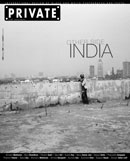
The reasons are plenty. Sometime it is because of their poor economical situation, sometime it is because of their own community and sometime the inability of several government agencies to implement effective policies. Few years back Indian Government set up a high level committee under the supervision of a former chief justice to review the economical and educational situation of Muslims. But the recommendations have not been implemented so far in most of the areas. Even opposition parties accused this report a politically motivated one and they identified several flaws in it. In this way the actual needs are lost and become irrelevant in due course of time.
But things are being changed very slowly in some areas. Though it is in small scales as compared to the problems, but somehow it gives a little hope. Government have introduced modern education in Madrasa board curriculum. In some areas several NGOs are campaigning with help of some scholars of the locality to spread the importance of education and encouraging the parents to send their kids to school. But these are certainly not enough. A serious action needs to be taken immediately; otherwise education will be confined within few people who can afford it or who have the mind set to afford it. A community needs a serious revamp in their thought process as well to bring them above the conventional vote bank.










Q&A with Balarka Brahma
Photography is…
Photography is to capture the history and I am witnessing and keeping the history with me. It should not be aimless. Each and every image should be captured for a cause irrespective of the magnitude.
Photography and writing…
Writing is tremendously important for a photographer, especially in documentary photography. I would also add reading as well for a successful work.
Who left the biggest impression on you?
First and foremost is my mother. She taught me how to fight in difficult situation without saying a single word. In photography perspective, I would like to specify three names that left biggest impression on me. I am not only moved by their photographs, but also their approach towards life. They are W. Eugene Smith, James Nachtwey and Sebastiao Salgado.
Tell us a little about yourself
I was born on 22 April, 1983. I am an independent documentary photographer from Kolkata, India. I started my photography journey in 2010. Initially I started experiment everything from landscape to street, but after attending a workshop on documentary photography in 2012, I permanently shifted to documentary photography and photojournalism. Since then I concentrated rigorously on social and thematic stories. I have always had a strong fascination with visual story-telling and its power in shaping our collective consciousness.
I worked with many Kolkata based NGOs, like Institute of Social Work, We Help Others and Jagaran for their different activities in areas like, Education, health and mental care.
My works have been published in major national and international magazines like, National Geographic, Invisible Photographers Asia, Fotoritim, Life force magazine, Social documentary network and many more.
I am a member of Pentaprism Creation, a Kolkata based picture collective.
 Balarka Brahma (http://www.balarkabrahma.com) is an independent documentary photographer from Kolkata, India. He has been doing photography since 2010. Initially he started experiment everything, but after attending a workshop on Documentary Photography in 2012 he permanently shifted to documentary photography and photojournalism. Since then he has concentrated rigorously on social and thematic stories. His works have been published in different national and international magazines.
Balarka Brahma (http://www.balarkabrahma.com) is an independent documentary photographer from Kolkata, India. He has been doing photography since 2010. Initially he started experiment everything, but after attending a workshop on Documentary Photography in 2012 he permanently shifted to documentary photography and photojournalism. Since then he has concentrated rigorously on social and thematic stories. His works have been published in different national and international magazines.








